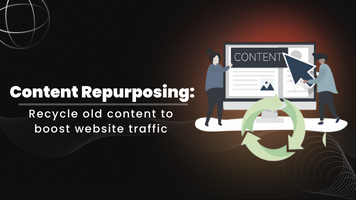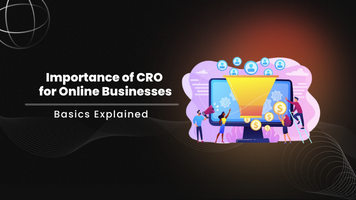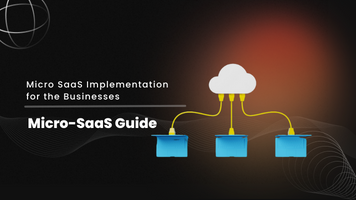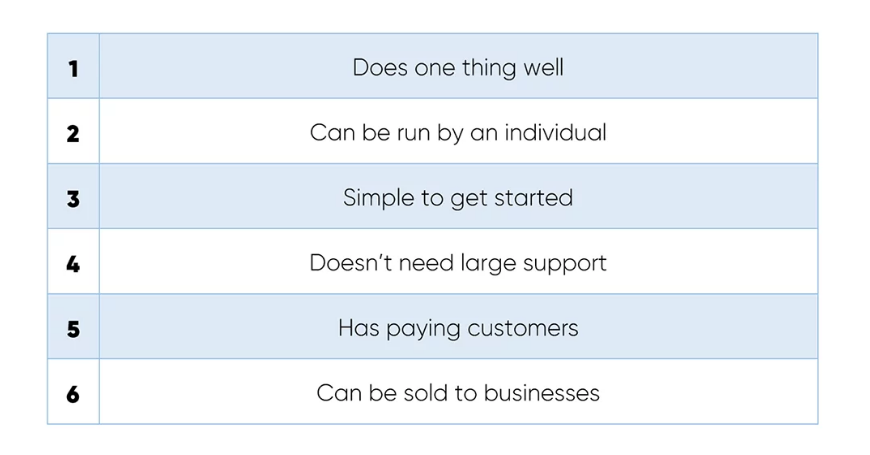Loveneet singh
Content Repurposing: Recycle Old Content to Boost Website Traffic
Content Repurposing
"Successful content is not about creation, but about curation." - Ann Handley, best-selling author, and chief content officer.
Content creation is a continuous process. Don't let your hard work go to waste! With time, any content can become obsolete and do not match the current trends. So , to make it worthwhile, it needs some kind of refurbishment to stay ahead of competition on Google search and new content being generated every now and then. Thats why its very essential to transform your massive blog post, white papers, or industry trends report from a one-time hit to a long-term asset.
With content repurposing, you can maximize your content-creation efforts, save time, and increase your conversion rate. Imagine giving new life to your older content and reaching an entirely new audience.

Producing new content ideas is not an easy task. And sometime it becomes difficult for writers and marketers to produce new ideas. So to we can, Instead of producing fresh content every time, content writers can recycle old content which has caused some decline in its organic traffic. The repurposing and recycling of content allows already written content can be tweaked with some latest trends, news or stats etc to meet the expectations of each marketing channel.
By reading this post, you will learn how to squeeze more value from the quality content you’ve been creating.
What Does It Mean To Repurpose Content?
Content repurposing refers to the process of modifying existing content and adapting it to create new forms of content. The new content is distributed through different channels to target new/different audiences. This involves making changes to the format, medium, or message of the content to maximize its reach and effectiveness.
According to a survey by Semrush, 51% of marketers reported that repurposing content had the highest impact on their content marketing success in 2020.
(Source: Semrush, "The State of Content Marketing Report 2020" )
Benefits of Repurposing Your Content
By giving new life to your existing content, you maintain consistent branding without the stress of constantly creating new content. Plus, you can cater to your audience's diverse content preferences by repackaging your content into different formats. And let's not forget the SEO boost!
Also Read: How to Build a Brand From Scratch - Branding Strategies Guide
Let’s look at some more benefits of recreating your content:
-
Boost Content Distribution
By changing the format of your content (e.g. from written to audio), you can reach more people. To promote content, the latest trend is to convert written blog posts and articles to audio and video files. Also, some of the content is rephrased with the help of Podcasts.
-
Consistent Publishing and Online Presence
Repurposing content allows you to keep publishing high-quality content on different channels without constantly creating new content. The SEO team keeps track of the ranking content. Once you know the exact expectation of end users from your brand. You can recreate the content in more effective ways.
-
Meet Audience Needs
Not everyone prefers the same content format. By repackaging your content into various formats, you can cater to a wider audience. For example, by picking up the highlights of a blog post, you can easily create an engaging social media post.
-
Reach a New Audience
Share your content on different marketing channels by adapting it to each channel's requirements.
According to a survey conducted by ReferralRock, 94% of surveyed marketers repurpose their content, and the remaining 6% are thinking about doing so in the future.
-
Boost SEO Results
Having multiple pieces of content for the same keyword can improve your search engine optimization as well. Also, you can control the backlinking o your site through the repurposed pieces.
According to a study by HubSpot, businesses that published 16 or more blog posts per month received 3.5 times more traffic than those that published 0-4 monthly posts.
Additionally, a survey by Orbit Media found that the average blog post takes over 4 hours to write while repurposing existing content can take significantly less time.
Evaluating Your Existing Content
Content marketing is an essential aspect of digital marketing, and it requires continuous efforts to produce content. To keep your content strategy relevant and effective, you need to evaluate your existing content periodically.
Also Read: 2024 Micro-SaaS Trends & Ideas To Use for Business Productivity
Here's how you can go about it:
-
Identify High-Performing Content
Your high-performing content is the one that has been most successful in engaging your audience, driving traffic to your website, and increasing your conversions. To identify such content, you can use analytics tools such as Google Analytics to measure the performance of your blog posts, social media updates, and other content pieces.
Look for content that has high page views, low bounce rates, high engagement rates, and high conversions. Once you identify the high-performing content, you can replicate the strategies that worked for those pieces in your future content.
-
Understand Your Audience's Preferences
To create content that resonates with your audience, you need to understand their preferences. Analyzing your audience's behavior and demographics can help you understand their preferences better.
Tools like Google Analytics can provide you with insights into your audience's interests, search queries, and social media activities. Use this information to create content that addresses your audience's pain points and interests, and in a way that they find most engaging.
-
Identify Content Gaps
Content gaps are topics or themes that your audience is interested in, but you haven't covered yet. Identifying content gaps can help you create new content ideas that resonate with your audience.
You can identify content gaps by analyzing your competitors' content, using social listening tools to monitor your audience's conversations, and conducting keyword research. Once you identify content gaps, you can create content that fills those gaps and provides value to your audience.
Repurposing Content: Strategies and Techniques
Repurposing content is an important step in your content automation. To identify content to repurpose:
- Highlight evergreen content from old blog posts.
- Repurpose all-new long-form content as part of your content creation process.
- Find posts driving significant traffic using Google Analytics.
- Use Buzzsumo to identify socially popular topics.
- Do keyword research to identify content to repurpose.
In the end, light up your content with the power of repurposing. Nowadays, rewriting and NLP content writing tools are available to help you recreate the content saving time and effort.
Repurposing content allows you to get the most out of your content by using it in different ways, thereby increasing its reach and impact.
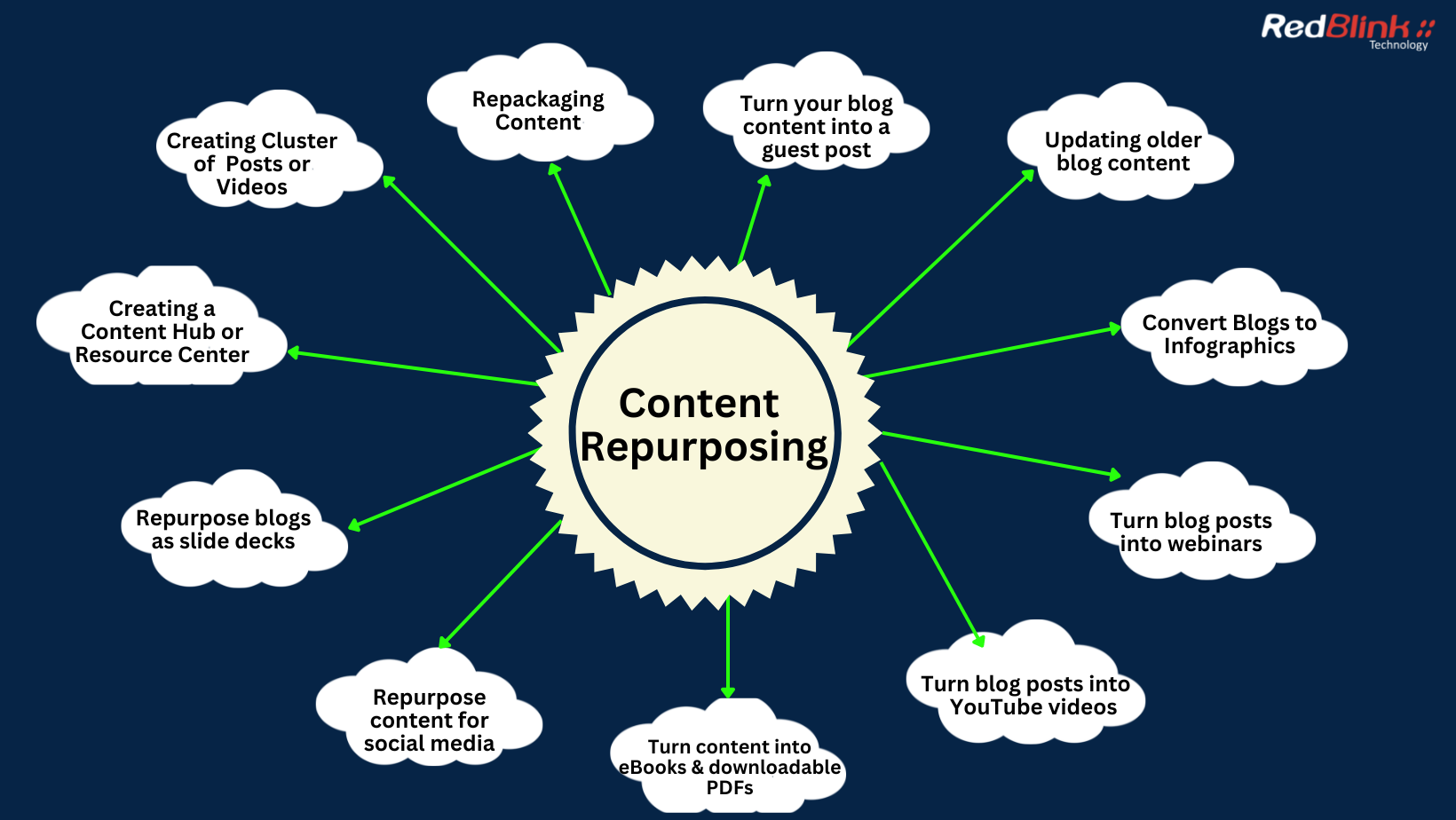
Here are the simple ways to get started with repurposing your content:
-
Repurpose blog content as slide decks
If you have any new skyscraper content, consider using it as a starting point for a slide deck on LinkedIn or Slideshare. A slide deck can be a great way to restate key points or summarize important statistics from your blog post. Consider using quotes from experts, actionable tips, or research-backed statistics to make your slide deck even more appealing.
-
Repurpose content for social media
You can also take your blog posts and repurpose them as social media images to promote on different platforms. This can be a great way to drive more engagement and increase awareness for both new and older content.
Consider using interesting tidbits or actionable advice, research-backed data or statistics, or quotes from experts to make your social media content more appealing.
-
Convert blog posts into eBooks and downloadable PDFs
If you have multiple blog posts on the same topic, consider combining them and repurposing the content as an eBook or a downloadable PDF. This can be a great way to increase leads generated from your blog. Consider using the content to create free content upgrades like eBooks, checklists, PDFs, or DIY templates.
-
Repurpose content as YouTube videos
If you have educational content, interviews, events, or webinars, consider repurposing and uploading them on YouTube. With the right video optimization in place, your videos will not only show up on YouTube, but also on Google's search results. This can be a great way to attract new blog readers, increase product sign-ups, and more.
-
Turn blog posts into webinars
If you have a collection of blog content on a specific topic that readers enjoy, consider repurposing that content as a conversion-focused webinar. Webinars are typically used for lead generation, so this can be a great way to generate more leads from your existing content.
-
Convert Blogs to Infographics
Infographics are the king of social engagement, with a whopping three times more likes and shares than other types of content.
According to a research study by Mention, which analyzed 11 billion social media mentions, infographics are a powerful way to present complex information in a digestible format, increase social shareability, and boost brand awareness.
While starting with infographics , you can consider:
-
- Take your highest-performing blog posts and create an infographic version to accompany them.
- Revamp your older blog posts with fresh, up-to-date information and accompany them with a visually appealing infographic.
- If you have conducted original research, summarize your findings in an infographic to increase social media sharing and secure press mentions.
-
Updating older blog content
Creating engaging blog posts is an easy way to increase organic rankings and website traffic.
Dan Fries, founder of BlueTree.AI, states that updating outdated content makes it relevant again and can help boost your search engine rankings.
-
- Identify your highest-performing content that is older than six months.
- Update only evergreen content, which remains relevant for readers over time.
- Identify the most outdated content pieces that need a refresh.
-
Turn your blog content into a guest post
To increase brand visibility, attract links, and drive traffic.
Here’s are tips to implement while creating guest posts:
-
- Identify sections in your guide that can stand alone as guest posts.
- Find high-authority websites in your niche that accept guest contributions.
- Pitch your ideas, write the guest post, and link back to your original guide.
A great example of this strategy in action is a piece about the latest graphic design trends. It has been featured on websites such as CampaignMonitor, GoSkills, Mention, and Millo. To get started, revisit your blog archives and find content that could be rephrased and repurposed into a series of guest posts.
Also Read: Importance of Good Web Design : How it can help your Business
-
Repackaging Content
Revamp and repackage your content to give it a new lease of life! By breaking down your content into smaller, manageable chunks, you can create a cluster of posts and videos for better engagement.
Another option is to bundle your content into an ebook or webinar, offering your audience a comprehensive resource in one go. You can also create a content hub or resource center, where you compile all your content in one place for your audience to explore at their own leisure.
By repackaging your content, you’re not only making it more accessible to your audience but also increasing its longevity and value.
-
Creating Cluster of Posts or Videos:
Repackaging content into a series of blog posts or videos can help create a more engaging and easily manageable format to cater to the needs of users. The revamped post includes the answers to the people’s queries.
-
Bundling Content into an Ebook
Another way to repackage content is to bundle it into a comprehensive guide or resource, such as an ebook.This format provides a comprehensive overview of a particular topic and can be a great way to showcase your expertise and build your brand.
-
Creating a Content Hub or Resource Center
A content hub or resource center is a central location on your website where all of your best content is housed and easily accessible. This type of repackaging allows you to keep your content organized and ensure that your audience has easy access to your best work.
By showcasing your content in a content hub or resource center, you can improve engagement, increase website traffic, and build a stronger brand.
Repackaging Content: Formats and Channels
Repackaging content involves taking existing content and presenting it in a new format or on a different channel. By doing so, you can reach new audiences, increase engagement, and get more value out of your existing content.
When repackaging content, it's important to choose the best format for your content, repurpose it for different social media channels, and create visually appealing content.
-
Choosing the Best Content Format
Understanding the purpose of content publishing is the most important activity in digital marketing campaigns. For example, old blogs can be converted into videos, infographics, or presentations for better user engagement.
-
Replacing Content on Different Social Media Channels
Each social media platform has its strengths and limitations, so you should adapt your content accordingly. For example, you can repurpose a blog post into a series of tweets or an infographic for Twitter, or create a short video clip or a carousel for Instagram.
-
Creating visually appealing content
Visual content is more engaging and memorable than text-based content, so you should incorporate visual elements into your repackaged content. This can include images, videos, infographics, or other interactive elements.
Best Practices for Content Repurposing
Repurposing content is an effective way to get the most out of your existing content while saving time and effort in creating new content.
Here are some best practices to follow:
-
Avoid Duplicate Content Issues
Duplicate content can harm your website's search engine rankings and can lead to penalties from search engines. To avoid this, you should avoid duplicating content verbatim across different pages or platforms. Instead, you should reword the content, update the information, and make it unique.
Also, make sure to include canonical tags on repurposed content pages to indicate the home source of the content.
-
Optimize Repurposed Content for SEO
Optimizing repurposed content for SEO can help you improve your search engine rankings and drive more traffic to your website.
To do this, you should identify relevant keywords for your repurposed content and include them in the content's meta tags, heading tags, and body text. You should also make sure that the repurposed content is mobile-friendly, has a fast loading speed, and is structured for easy readability and navigation.
Also Read: ChatGPT Open AI For Beginners - What is it & How to Use It?
-
Measure the Success of Repurposed Content
Measuring the success of repurposed content can help you identify which types of content perform well, what channels are most effective, and which repurposing strategies are most successful.
You can use analytics tools to track the performance of your repurposed content, such as page views, engagement rates, and conversions. This information can help you fine-tune your content repurposing strategy and make informed decisions about future content creation. You can start repurposing of your content plan by creating content calendar.
Final Thoughts on Maximizing Content Repurposing Impact
In conclusion, content repurposing is a powerful strategy for maximizing the impact of your digital marketing efforts. By repurposing existing content, you can reach a wider audience, reinforce your brand messaging, and boost your lead generation strategy.
To fully realize the benefits of content repurposing, it's important to work with a knowledgeable and experienced digital marketing team. A team that can help you identify the best content pieces to repurpose, determine the most effective formats and channels for reaching your target audience, and track your results to continually improve your strategy.
If you're ready to take your digital marketing efforts to the next level and start maximizing the impact of your content, schedule an appointment with our Digital Marketing team today. Our team of experts can help you develop and execute a comprehensive content repurposing strategy that drives results and supports your overall marketing goals.
Don't wait, schedule your appointment now and let's get started!
Importance of CRO for Online Businesses - Basics Explained
CRO Importance
In today's fast-paced digital age, eCommerce businesses face more competition than ever before. With so many options available to customers, it's more important than ever to ensure that your website is optimized to convert visitors into customers.
That's where conversion rate optimization (CRO) comes in. CRO is the process of increasing the percentage of visitors to your website who take a desired action, such as making a purchase or filling out a form.
What is Conversion Rate Optimization (CRO)?
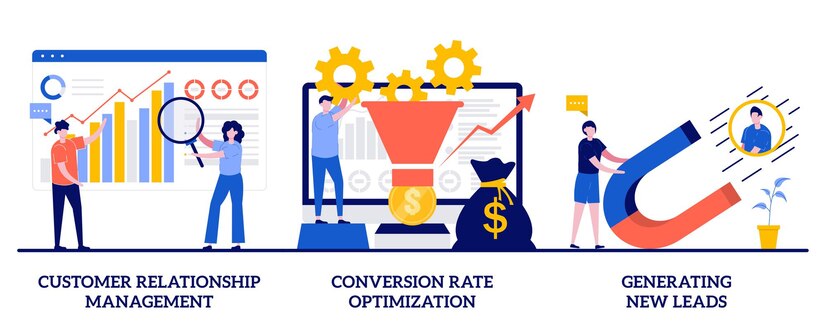
Conversion rate optimization is the process of improving the percentage of website visitors who take a desired action. This can include making a purchase, filling out a form, or subscribing to a newsletter.
The goal of CRO is to increase the overall effectiveness of a website and improve the user experience for visitors.
How is CRO Measured?
CRO is measured by calculating the conversion rate, which is the number of conversions divided by the number of website visitors
For example, if 100 visitors to your website make a purchase, and you have a total of 1,000 visitors, your conversion rate would be 10%. The higher your conversion rate, the more effective your website is at converting visitors into customers.
Which Conversion Metrics are Important for CRO?
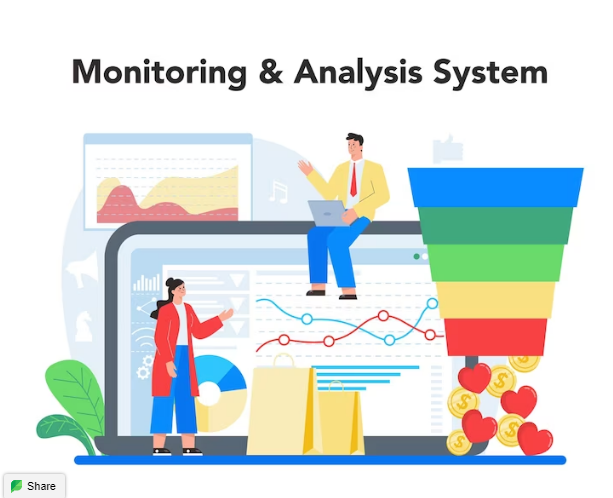
There are several key metrics that are important for measuring the success of CRO efforts. These include:
- Bounce rate: The percentage of visitors who leave your website after only viewing one page.
- Average time on site: The average amount of time that visitors spend on your website.
- Pages per session: The average number of pages that visitors view during a single session on your website.
- Conversion rate: The percentage of website visitors who take a desired action, such as making a purchase or filling out a form.
Reasons Why Conversion Rate Optimization is Important for Online Businesses

- Improved User Experience: CRO helps to improve the overall user experience for visitors to your website, making it easier for them to navigate and find what they are looking for.
- Increased Revenue: By increasing the conversion rate, businesses can see a direct increase in revenue. A higher conversion rate means that a larger percentage of website visitors are making a purchase, which can lead to a significant increase in sales.
- Better Understanding of Customer Needs: CRO can also provide valuable insights into user behavior and preferences, allowing businesses to make informed decisions about future product offerings and website design.
- Increased competitiveness: With so much competition in the eCommerce space, it's more important than ever to ensure that your website is optimized to convert visitors into customers. CRO can help to set your business apart from the competition and give you a competitive edge.
Why is Conversion Rate Important for eCommerce Websites?
For eCommerce websites, conversion rate is crucial because it directly impacts the bottom line. By improving the conversion rate, businesses can increase their revenue and profitability. Additionally, CRO can provide valuable insights into customer behavior and preferences, allowing businesses to make informed decisions about future product offerings and website design.
Conclusion:
In conclusion, conversion rate optimization is an essential aspect of eCommerce success. By improving the user experience, increasing revenue, and providing valuable insights into customer behavior, CRO can help businesses to achieve their marketing goals and stay competitive in a crowded market. If you want to optimize your website's performance and take your eCommerce business to the next level, consider investing in conversion rate optimization.
Who Can Help Me With CRO?
If you don't have an internal UX team or the resources to conduct a CRO audit yourself, there are agencies that can provide assistance for a fee. RedBlink offer specialized CRO services and typically charge around $1500 - 2,000.
Look no further than RedBlink, your one-stop solution for all things conversion rate optimization (CRO). optimize your website's conversion rates and take your business to the next level
Our team of experienced experts has a deep understanding of the latest CRO strategies and techniques, and we are passionate about using data-driven insights to help our clients achieve their business goals. Whether you need to improve website usability, increase lead generation, or boost online sales, RedBlink has the expertise and resources to get the job done.
We know that every website is unique, which is why we take a personalized approach to each project. We start by conducting a thorough analysis of your website, examining key metrics like bounce rate, average time on site, and conversion rates.
From there, we use a combination of A/B testing, customer research, and analytics to identify opportunities for improvement and develop a custom CRO strategy tailored to your specific needs.
With RedBlink, you can expect
- Data-driven insights and recommendations based on your specific website and goals.
- A team of experts with a deep understanding of the latest CRO strategies and techniques.
- A personalized approach to each project, ensuring that your website is optimized for maximum ROI.
Don't let poor conversion rates hold you back. Let RedBlink help you take your website to the next level and achieve your business goals. Get in touch with us today to learn more about our CRO services and how we can help you achieve success.
Also Read -
How To Measure The Success Of Your Content Strategy
SEO Content Writing vs Creative Content Writing
How To Measure The Success Of Your Content Strategy
How To Measure The Success Of Your Content Strategy
"Without data, you're just another person with an opinion." - W. Edwards Deming
Do you feel that, despite putting countless hours and resources into your content marketing campaigns, you are still lagging to achieve marketing goals?
It is a fact, today many digital marketing companies are spending a lot on content development but sailing in the same boat. What’s next then? - Develop optimized content calandar by creating blog posts based on answering user queries, engaging web pages and social media content.

According to the Content Marketing Institute's 2020 study, 80% of respondents use metrics to gauge their performance, but only 65% have key performance indicators in place, while a staggering 43% don't even measure their content marketing return on investment.
Well, Mr. Tom Fishburne says- “The best marketing doesn't feel like marketing." -
So, a digital marketing team of expert-level content writers should create a content development strategy that focuses on sharing informative posts and using the best use of targeting keywords and appropriate call of actions to promote their services and products.
In this post, we will learn how to invest our time in creating accurate content measuring strategies.
Importance of Measuring Content Success
First of all, it is important to know the objective of generating the content. In the digital age, the main purpose of writing content is to increase your online visibility and rank your website in top searches. For that you need to write optimized and user- centric content along with best possible call to actions to increase return on investment (ROI).
But How can we know which content has produced the best ROI and which the lowest?
Measuring the success of your content is critical to understand what works and what doesn’t work for your target audience. By tracking your content performance, you can identify which pieces of content are resonating with your audience.
Also Read: Micro SaaS Implementation for the Business - Micro SaaS Guide
You may miss an important article or a topic while covering an important topic- which you only discover when you begin measuring your content.
Failing to measure the success of your content can result in the inefficient use of time, resources, and funds. Developing a robust and enduring content marketing plan requires monitoring the effectiveness of content creation and curation.
A valuable content strategy includes:
- Understanding your target audience and their needs.
- Creating high-quality and relevant content that addresses those needs.
- Developing a content calendar to ensure consistent delivery of content.
- Utilizing various formats and channels to reach your audience (e.g. blog posts, videos, social media).
- Promoting your content through various marketing channels.
- Analyzing and measuring the performance of your content to optimize future content creation.
Parameters to Measure Effectiveness of Content Strategy
So, if you want to maximize the success of your content strategy and achieve marketing goals, start by evaluating content development parameters regularly. Make data-driven decisions to adjust and improve your content strategy.
By monitoring audience engagement, conversion rates, and the success of search engine optimization, you can refine and optimize your content strategy.
Follow to evaluate the impact of a well-executed content strategy by considering the following parameters:
-
Track Basic KPIs to Develop Content Strategy
Tracking Key Performance Indicators (KPIs) is an essential step in measuring the effectiveness of a content strategy. Here are some important KPIs to set before developing the content:
-
- Audience engagement
- Number of likes, shares, comments, and page views
- Time spent on the website
- Bounce rate
- Number of leads generated from content
- Conversion rate from content to sale
- Search engine optimization success - no. of ranking blog posts, website pages, and so on.
Also Read: How to Rebrand your Business - Best Practices for 2024
-
Track website Traffic and Conversions
Measure website traffic to understand how users are reaching your content. If the user traffic is less on your website that means either the content is not optimized or there is an issue with UI UX. Also, you need to check your SEO plan. Here are some tips to develop engaging content:.
-
- Use the Channel report in Google Analytics to see where blog traffic is coming from
- Check if users are reaching your content organically or being referred from other sites (e.g. social)
- Track the source of traffic from email newsletters, social media, etc.
- Use the Source/Medium report to look more granularly at traffic metrics
- Compare organic traffic month-over-month or year-over-year to measure success in optimizing content for search
- Monitor improvement in referral traffic over time and see which channels bring the most users to your site
- Track conversions to understand how users engage with your content
- Set up conversion tracking in Google Analytics to monitor goals like form submissions or product purchases
- Monitor the conversion path and see where users are dropping off during the conversion process
Tools to Use: Google Analytics, other Analytics Platforms
-
Evaluate Data and Information
Evaluating data and information to develop a successful content strategy involves adopting the content repurposing and repackaging technique instead of writing the content without the objective.
Reviewing the data you’ve collected and identifying trends, patterns, and areas for improvement should be regular practice. Be sure to compare results against your KPIs to determine if you are meeting your goals.
The content created and digital marketing objectives must match. You need to create effective SEO campaigns by generating optimized content.
-
Keyword Ranking
Maximize the success of your content strategy by consistently tracking your core keywords and monitoring their rankings on a regular basis. To develop optimized content , you should Start with thorough keyword research to identify priority targets to focus on
Utilize powerful tools ( SEMRush, Google Search Console etc.) to track your keywords and see the impact of your efforts. Showcasing ranking improvements over time is a great way to demonstrate the success of your content program and generate excitement among stakeholders.
-
Lead Generation
Are you tired of struggling to prove the worth of your content marketing efforts? Tracking lead generation from your content is the key to demonstrating its impact on lead acquisition and nurturing.
With Google Analytics, you can easily set up goals and track conversions from your content assets. Common conversion opportunities include demo requests, contact form submissions, and asset downloads. Use Analytics segments to see exactly how many conversions came from your blog or resource hub.
And it doesn't stop there! Integrating with your Customer relationship management (CRM) allows you to not only track the quantity of leads, but also the quality. Impress your stakeholders by showing the number of sales-qualified or marketing-qualified leads generated by your content.
-
Return on investment (ROI)
A content writer and marketer's ultimate goal is to increase sales and ROI. To calculate the Return on Investment (ROI) from content, you need to determine the revenue generated by the content and the cost of producing it. Here are the steps:
- Determine the revenue generated by the content: This can be done by tracking the number of conversions or sales that were generated as a result of the content. For example, if you created a blog post promoting a product and it resulted in 50 sales, and the value of each sale is $100, then the revenue generated by the content is $5,000.
- Determine the cost of producing the content: This includes the cost of any resources used to create the content, such as the time and salary of the content creators, as well as any promotional expenses such as advertising costs or content distribution fees.
- Calculate the ROI: To calculate the ROI, subtract the cost of producing the content from the revenue generated by the content, and then divide that number by the cost of producing the content. For example, if the cost of producing the content was $1,000, and the revenue generated by the content was $5,000, then the ROI would be 400%: ($5,000 - $1,000) / $1,000 = 4.0.
HubSpot Case Study on content strategy success
One notable example of a successful content strategy is that of Hubspot, an inbound marketing and sales platform. The company’s approach was to create valuable and educational content that would attract and engage their target audience, and ultimately drive business growth.
One key aspect of their strategy was their blog, which produced a high volume of regular, high-quality content covering topics relevant to their target audience. They also utilized social media to promote their content and engage with their followers, and utilized calls-to-action (CTAs) throughout their website and content to drive conversions.
Another important aspect of their strategy was the use of data and analysis to continually improve their approach. They closely tracked the performance of their content using analytics tools, and used the insights gained to inform future content creation and distribution decisions.
The results of their efforts were impressive. Hubspot saw significant growth in website traffic, leads, and customers, and their brand became widely recognized as a thought leader in the inbound marketing space.
Final Thoughts: Choose the Right Agency to Achieve Content Marketing Goals!
Optimized Content= Strategy + Continuous Efforts + Consistency
At RedBlink, we will provide a complete package to develop optimized content ensuring a result driven SEO campaign.The effective strategy will hit your goals, and track important KPIs.
We will create quality, optimized content for you to publish on your website consistently. We’ll also promote your content for higher visibility and track your ROI, so you know exactly how it’s performing.
Don't wait any longer! Take action now to find the right agency that can help you achieve your content marketing goals. With a strong partner by your side, you'll be able to develop a strategy that resonates with your audience, drives engagement, and delivers results. The benefits are endless, so make the decision today to invest in your content marketing success.
Act now and take the first step towards achieving desired SEO results with the help of developing a measured content strategy.
Creating a Content Calendar - Types, Steps & Tips 2024 Guide
Creating a Content Calendar
A well-planned content calendar is the foundation of a successful content strategy.
Creating and consistently providing interesting, engaging, and relevant content to potential and current customers can be a daunting task for copywriters.
Despite having a team of talented writers and tech-savvy social media experts, the pressure to constantly generate new and fresh content can be overwhelming. One solution to this challenge is to implement a content calendar.
A content calendar, sometimes referred to as an "editorial calendar," is a written plan that outlines when and where you intend to publish your upcoming content. This typically includes items like future content pieces, status updates, promotional activities, collaborations, and updates to existing content.
Understanding the Different Types of Content

Creating a variety of content can help keep your audience engaged and coming back for more. Incorporating different forms of content, such as blog posts, videos, podcasts, images and graphics, and social media posts, can help you reach a wider audience with your marketing message. Mixing up the format of your content can also make it more interesting and dynamic.
Variety is the Spice of Blogging
Blog posts come in many forms and can serve different purposes for the audience. Some examples include:
- How-to guides: Step-by-step instructions on a specific topic or task.
- Example - How to Build a Brand From Scratch
- Opinion pieces: Articles that express a writer's thoughts, feelings, and beliefs on a particular issue.
- News and updates: Posts that provide timely information on current events or developments within a particular industry or community.
- Example - An important next step on our AI journey
- Interviews or case study: Conversations with experts, influencers, or thought leaders, aimed at providing insights and unique perspectives.
- Product reviews: Evaluations of products or services, written with the intent to inform and help readers make informed decisions.
- Example - Micro-SaaS ideas and trends in 2024
By providing a mix of these different types of content, you can cater to the diverse needs and interests of your blog audience and deliver valuable and engaging posts.
The Importance of Including Videos in Your Content Calendar
Videos are a powerful way to engage and connect with your audience, as well as to share information in a more dynamic and entertaining way.
Including videos in your content calendar allows you to:
- Showcase your products or services
- Provide educational content
- Share customer testimonials
- Increase brand awareness
When planning and organizing your video content, consider the following steps:
- Identify your target audience
- Define your goals
- Plan your content
- Schedule your video production
- Promote your videos
Now you have a better understanding of videos role in content strategy. Let's go in more detail.
There are several types of videos that can be used to achieve different goals and connect with your target audience:
Explainer videos: These are short, simple videos that explain complex topics or products in an easy-to-understand way. They are great for educating your audience and promoting your products or services.
How-to videos: These videos show step-by-step instructions for completing a task or solving a problem. They are great for providing helpful content and establishing yourself as an expert in your field.
Customer testimonial videos: These videos feature real customers discussing their positive experiences with your products or services. They are a powerful way to build trust and credibility with your target audience.
Product demo videos: These videos showcase the features and benefits of your products, helping potential customers better understand what you offer.
Behind-the-scenes videos: These videos give your audience a look at the people and processes behind your brand, helping to humanize your business and build a connection with your audience.
Live videos: Live videos allow you to interact with your audience in real-time and provide them with a more intimate and authentic experience.
Animated videos: These videos use animation to explain complex topics or convey abstract ideas in a visually engaging way.
Types of Podcasts to Incorporate into Your Content Calendar
Podcasts are a popular medium for delivering audio content, which can be enjoyed on-demand by listeners through various platforms, such as Apple Podcasts, Spotify, and Google Podcasts. They are an excellent tool for content creation and can be used to supplement other forms of content, such as blogs, social media, and video.
To effectively incorporate podcasts into your content calendar, it's important to plan the topics, guests, and promotional efforts in advance, just like you would for any other type of content. By including podcasts in your content calendar, you can ensure that your audience has access to a variety of content and can engage with your brand in multiple ways.
Some of the most popular types of podcasts include:
Interview podcasts - These podcasts feature interviews with experts or influencers in your industry, providing your audience with valuable insights and perspectives.
Solo podcasts - Solo podcasts are hosted by a single individual, who shares their thoughts, experiences, and knowledge on a particular topic.
Narrative podcasts - Narrative podcasts tell a story, either fictional or non-fictional, using audio storytelling techniques.
News and current events podcasts - These podcasts cover the latest news and current events, providing your audience with up-to-date information on what's happening in the world.
How-to or educational podcasts - These podcasts provide step-by-step instructions or lessons on a particular topic, helping your audience learn something new.
Comedy or entertainment podcasts - These podcasts are designed to make listeners laugh or provide entertainment through humor or pop culture references.
By including a variety of these different types of podcasts in your content calendar, you can ensure that you're catering to the diverse interests of your audience
Images & Graphics in Content Calendar - Platforms & tools
Images and graphics play a vital role in a content calendar as they can help to break up text-heavy content, making it more visually appealing and easier to digest. In addition to improving the overall look of your content, images and graphics can also serve several other important functions:
Enhancing the message of your content: By adding relevant images or graphics, you can provide additional context and help to reinforce the message of your content.
Boosting engagement: Images and graphics are often more attention-grabbing than plain text, and they can help to increase the engagement levels of your audience.
Improving accessibility: By including images and graphics, you can help to make your content more accessible to a wider audience, including those who may have visual impairments or difficulties with reading.
Improving search engine optimization (SEO): Adding images and graphics with descriptive alt text can also improve the search engine optimization (SEO) of your content, making it easier for search engines to understand the content and rank it higher in search results.
When incorporating images and graphics into your content calendar, it's important to carefully select the appropriate visual aids that best complement the message of your content. By doing so, you can help to enhance the overall impact and effectiveness of your content.
Platforms & tools for creating images graphics for content calendar -
Unsplash - A large collection of high-quality, royalty-free images for use in your content.
Pexels - Another library of high-quality, royalty-free images, with a focus on simplicity and ease of use.
Canva - An easy-to-use graphic design tool that allows you to create custom images, graphics, and social media posts.
Adobe Creative Cloud - A comprehensive suite of design tools, including Photoshop and Illustrator, that can be used to create professional-quality graphics and images.
Piktochart - An intuitive, online graphic design tool that enables you to create infographics, presentations, and other types of visual content.
Stencil - An online graphic design tool that offers a library of over a million stock images, graphics, and templates.
Venngage - An online tool for creating infographics, presentations, and other types of visual content, with a focus on simplicity and ease of use.
By using one or a combination of these platforms, you can easily source or create high-quality images and graphics for use in your content calendar.
Incorporating Social Media into Your Content Calendar
Social media posts play a crucial role in promoting and sharing your content with a wider audience. By incorporating social media into your content calendar, you can reach a larger and more diverse audience, and help to drive social media referral traffic and engagement to your content.
When it comes to social media platforms, there are several popular options to consider, including:
facebook content calendar
Twitter
Instagram
LinkedIn content calendar
Pinterest
TikTok
To effectively plan and organize your social media posts, you can use a variety of tools, including:
Hootsuite - A comprehensive social media management tool that allows you to schedule, publish, and analyze your social media posts.
Buffer - Another social media management tool that makes it easy to schedule and publish your social media posts.
Sprout Social - A comprehensive social media management platform that provides advanced analytics and reporting features.
Later - A tool specifically designed for Instagram, Later allows you to plan, schedule, and publish your Instagram posts.
By using these platforms and tools, you can easily integrate social media into your content calendar, helping you to effectively promote your content and reach a wider audience.
Steps to Organize and publish Content calendar

Creating a content calendar can seem daunting, but it's a straightforward process that can be broken down into a few simple steps:
Nowadays , professional writers use the content automation tools to create a content calendar. Here are simple steps to follow to create a content calendar
Identify your goals and target audience
This will help you determine the type of content you want to create and when to publish it For example, if your goal is to increase website's organic traffic, you may want to create and publish blog posts that educate and engage your target audience on a regular basis.
Choose a platform for your calendar
For this purpose, you can use content automation tool like Google Calendar or Trello.The tools allow you to generate a schedule where you allocate specific time , manpower and other resources to plan content generation. The content schedule is also referred to as a workflow system or resource sheet in some organizations.
Plan out your content topics and schedule
This can include blog posts, social media updates, email newsletters, and any other content you plan to publish. For example, you may want to have a theme for each month that aligns with current events or holidays, such as a "Anniversary month " theme to boost the brand story and let people connect with your brand.
Assign tasks and deadlines to team members
Make sure everyone knows what their responsibilities are and when content is due.
For example, if you're publishing a monthly email newsletter,
- you may assign one team member to research and write articles
- another to design the layout
- and another to handle the distribution
By assigning clear tasks and deadlines, everyone on the team knows what's expected of them and can work efficiently
Review and adjust as needed
As you start to implement your calendar, take note of what's working and what needs to be adjusted. Continuously refine your calendar to ensure you're meeting your goals and providing the best content possible.
Overall, setting goals and deadlines is an important step in creating a content marketing strategy that is effective and sustainable. By identifying your target audience, setting measurable goals, and creating deadlines for publishing content, you can create a content marketing strategy that drives results and helps you achieve your business objectives.
This includes metrics like engagement, website traffic, and conversions.There are various tools to see the traffic perofrmance of a website. A project manager should keep track of performance . tracking the performance is one of the primary focus of the content calendar
Conclusion
A content calendar serves as a crucial part for streamlining the workflow of content writers and SEO teams. By conducting keyword research, carefully planning content topics, and assigning specific tasks and deadlines to team members, a content marketing professional can ensure a seamless content creation process.
Don't let the stress of creating content hold you back. Embrace the power of a content calendar and take control of your digital marketing and content creation efforts. Make it a priority to implement a content calendar and see the difference in your website's organic traffic stats.
A well-planned content calendar is a crucial aspect of a successful content strategy. However, creating and consistently providing interesting, engaging, and relevant content can be a daunting task.
That's where RedBlink comes in. Our digital marketing services help businesses create a content calendar, plan and produce engaging content, and promote it to the right audience. Our team of talented writers and tech-savvy social media experts will work with you to create a comprehensive content strategy that will help your business succeed.
Contact us today to learn more about how we can help you achieve your content marketing goals.
Keyword Research: The Foundation of a Winning Content Strategy
Importance of Keyword Research in Content Strategy
"The best way to predict the future of your business is to create it." - Peter Drucker (father of modern management).
In the same way, keyword research helps the professionals to predict the search terms that your users might be typing in search engines.
By conducting keyword research, you can understand your target audience and you get a clear direction for creating your content. It involves discovering and analyzing the words and phrases that users enter into search engines concerning your business, product, or service. This research provides valuable insight into how users think about and discusses your product, as well as their needs and questions.
The results of keyword research play a crucial role in building a successful content strategy. This information can be used to develop websites that not only follow best UX practices but also align with your target audience's needs, ensuring optimal website optimization for search engines.

Keyword research has a vital role in developing optimized content useful for search engine optimization (SEO) with higher search results. Let's see how it works!
What is Keyword Research ?
Keyword research is the process of identifying words, phrases, and queries to rank your website on search engine rankings. The aim is to effectively use keywords on the website pages.
The purpose is to find keywords with high search volume and low competition that could be used in heading tags, meta tags, anchor tags and other important positions of the website content. A detailed keyword research not only helps in understanding user search intent queries but also helps in achieving search engine goals for your business.
Importance of Keyword Research in Content Strategy
Good keyword research allows website owners and marketing experts to find what users could be searching while looking to buy your products and services. Search engines use a sophisticated algorithm to provide the user with the best answer from a high authority website related to their search query.
According to a study by Hubspot, "69% of marketers say increasing organic visibility is their top inbound marketing priority". This highlights the importance of keyword research as it plays a crucial role in increasing a website's organic visibility by helping to optimize the content for search engines.
A digital marketing expert starts an SEO campaign based on keyword research. To better understand SEO strategy, you need to value keyword research..
A business strategy wraps around the needs of end users. The marketing strategy answers the following user queries:
- What is the top query of a user?
- What is the expectation of users from your brand?
- What will keep them coming back to your website?
- How can you deliver the best service to your marketplace?
When you start thinking with the user’s mind and focus on user engagement, the website content is likely going to meet the requirement. To start with, you can start using SEO tools such as Moz, SEMrush keyword magic tool, and Ahrefs Keyword Explorer. The tools will help you prepare a list of associated search terms, along with traffic statistics showing how often they are used.
Broadly, Keyword research is an extension of catering to the needs of your audience. When you do so, the SERP results are likely to go to the top.
Basics of Keyword Research
The right keyword research will allow the creation of a successful online presence. A strong research strategy is like a crystal ball into the minds of your audience, allowing you to create resonating content. So, let’s get familiar with the basics of starting research on keywords:
-
Monthly Search Volume (MSV)
Monthly Search Volume (MSV) is a starting point for identifying target keywords, but it doesn't guarantee success. High MSV keywords may drive traffic but not necessarily convert to sales.
On the other hand, low-volume keywords can be more valuable as they reach a more focused audience who are likely to convert. Thus, MSV should be considered alongside other factors when choosing keywords to rank for.
-
User Intent
User intent refers to the objective behind a user's search query. Understanding user intent is vital for creating content that attracts visitors and drives engagement.
In fact, according to a recent study, 70-75% of search engine users are specifically looking for information and not just browsing aimlessly, highlighting the importance of tailoring content to meet their intent.
If you create content that matches the user's intention, you will not only attract more visitors. On the other hand, you'll also increase the likelihood that they'll take a desired action, such as “a purchase”.
-
Keyword Relevancy
Keyword relevancy refers to the relationship between the keywords used in a piece of content and the topic of that content.
An example of keyword relevancy would be a blog post on "best vegan restaurants in Los Angeles" using relevant keywords such as "vegan," "restaurants," "Los Angeles," and "vegetarian" in the content, title, and meta description.
This helps search engines understand the topic of the content and increases the chances of the post ranking well for those keywords, making it easier for users searching for information on vegan restaurants in Los Angeles to find the post.
-
Long-Tail keywords
Long-tail keywords are specific, longer phrases that are more targeted and less competitive than short, generic keywords. They typically have lower search volume but a higher likelihood of converting into sales or leads.
For example:
- "best women's running shoes for overpronation"
- "organic dog food for sensitive stomachs"
- "affordable luxury hotels in Paris"
- "best vegan restaurants in Los Angeles"
- "professional portrait photography services in Miami"
These long-tail keywords are much more targeted and relevant than generic keywords like "running shoes," "dog food," "hotels," "restaurants," or "photography services." They can help a website or online business rank higher in search engine results pages (SERP) and attract more qualified, motivated visitors.
-
Understanding User Queries
Understand the four types of keywords that categorize different user intentions, essential for crafting a winning keyword strategy:
-
- Informative: These keywords show the user is searching for information or answers to questions (early stage of the buying process).
- Navigational: These keywords reveal the user's desire to find a specific brand, site, or page (brand-focused searches).
- Commercial: These keywords reflect the user's research into brands, products, or services (mid-stage of the buying process).
- Transactional: These keywords indicate the user is ready to make a purchase or take action (late stage of the buying process).
Marketers can target users at the right stage of their journey by knowing these keyword types.
-
Local Keyword Research
Local keyword research is a crucial component of local SEO for small businesses. It helps to target a specific geographic location, which is beneficial for establishing a small business or a business with a specific geographic focus.
By using local keywords, businesses can attract more relevant traffic to their websites, thereby increasing the chances of conversions and sales. By identifying opportunities to rank for relevant local keywords, small businesses can stay ahead of their competition and gain a competitive advantage.
A local SEO company's strategy that leverages local keyword research has been proven to drive results and is essential for the success of small businesses looking to boost their online presence in a specific geographic area. Utilizing local keyword research and implementing local SEO tactics can help small businesses reach their target audience and achieve their goals.
According to a study by BrightLocal, 76% of consumers who conducted a local search visited a store within 5 miles, and 28% of those searches resulted in a purchase. This highlights the importance of optimizing for local search and the impact it can have on the online presence of the business.
Unfolding Secrets to a Successful Keyword Research Strategy
To conduct effective keyword research:
- Utilize keyword research tools to understand your audience's search queries.
- Analyze your competitors' keywords to gain insights into the competitive landscape and content ideas.
- Focus on seasonal and regional trends to identify long-tail keywords.
- Observe organic search results to discover new competitors or target keywords.
For a successful SEO campaign, choose keywords that align with your audience's intent and drive traffic to the website. This way , you can avoid high bounce rates by avoiding generic terms in favor of long-tail keywords..
Optimizing website content for search engines
Alright, you have an idea of how much traffic your proposed content could get. Now it’s time to do some add on!
Here’s a quick recap:
- Use a tool to find new keywords
- Group similar keywords into content
- Determine the total search volume and potential traffic for each content cluster
- Layer in business statistics to determine the ROI on each page
Keyword Research Process for a Successful SEO strategy
Here is a step-by-step process for conducting keyword research as part of a successful SEO strategy:
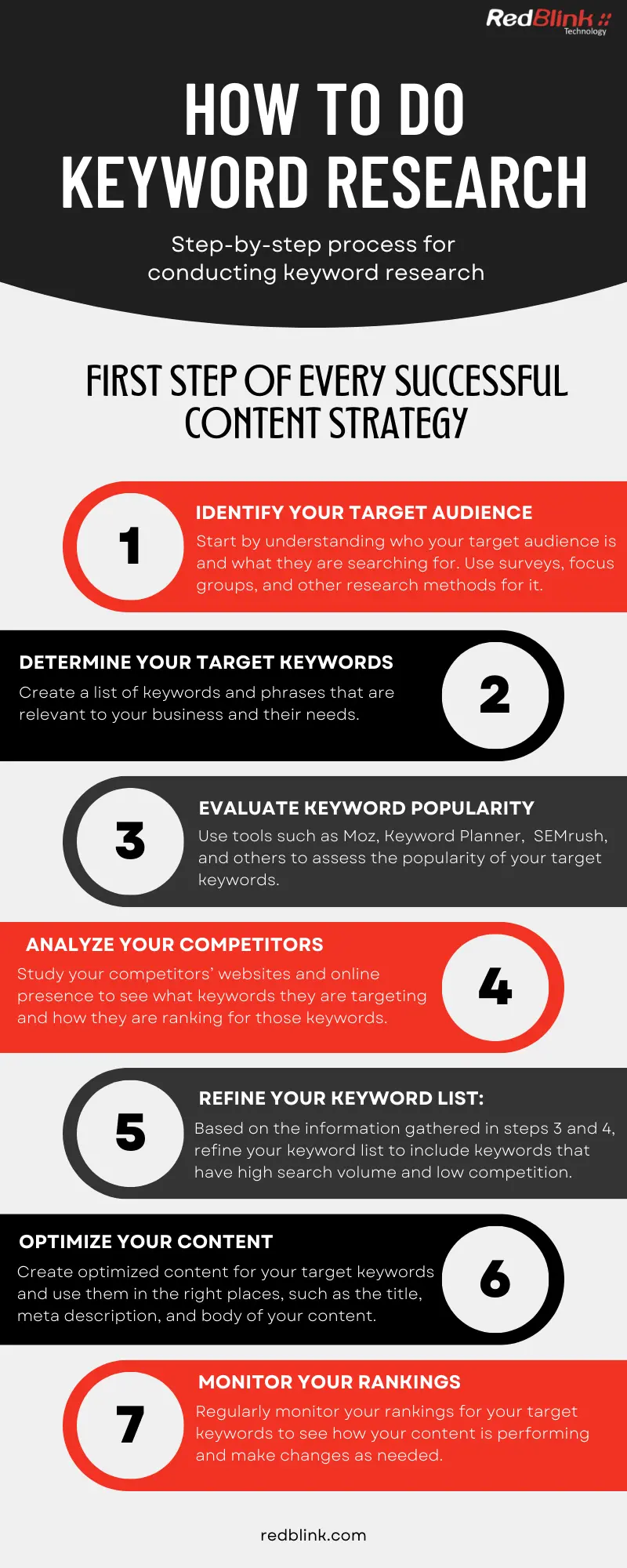
By following this process, you can conduct effective keyword research and optimize your content for search engines, ultimately improving your visibility and driving more traffic to your website.
Tools to optimize Keyword Research
To improve search engine results, you can use several paid and free tools To start with, check out these top free- tools:
A free tool that helps you analyze seasonality and regional trends for your keywords. Also, uncover related topics and sub-regions for more focused results.
This tool provides you with insight into how users are searching for your keywords by identifying related questions, phrases, and comparisons. Upgrade to the pro version for added features like time and location filters.
Use this tool, designed for Google's advertising platform, to gain insight into search queries and competition for your keywords, including average monthly searches and volume trends.
Analyze your website's current content and discover which search queries are driving traffic to your site with this tool. Also, find information on your site's search engine ranking positions.
Utilize this feature to see what Google suggests as you type in your keywords and identify new ideas for optimization.
Don't Miss Out: Essential Takeaways and Suggestions for developing a Content Strategy
In conclusion, keyword research is the backbone of a winning content strategy. By understanding what your target audience is searching for, you can create content that is relevant, useful, and optimized for search engines. With the right tools and approach, keyword research can help you achieve higher rankings, drive more traffic to your site, and increase your online visibility.
If you're looking to improve your content marketing and SEO efforts, don't hesitate to reach out to an experienced SEO agency. With their expertise and resources, they can help you create a content strategy that is based on solid keyword research and optimized for success.
So, take action today and invest in the foundation of a winning content strategy - keyword research.
Why Content Strategy is Key to Success in Digital Marketing [2024]
Importance of Content Strategy For Digital Marketing [2024]
“Content is the atomic particle of all digital marketing." - Rebecca Lieb, Author and Digital Media Expert.
In today's digital age, having a strong online presence is crucial for any business looking to succeed. One of the most important aspects of building and maintaining a higher brand value is to create a content strategy.
A content strategy is a plan to outline how a business will create, publish, and distribute content to its target audience. Various types of content are created for social media presences, websites, blogs, and case studies.
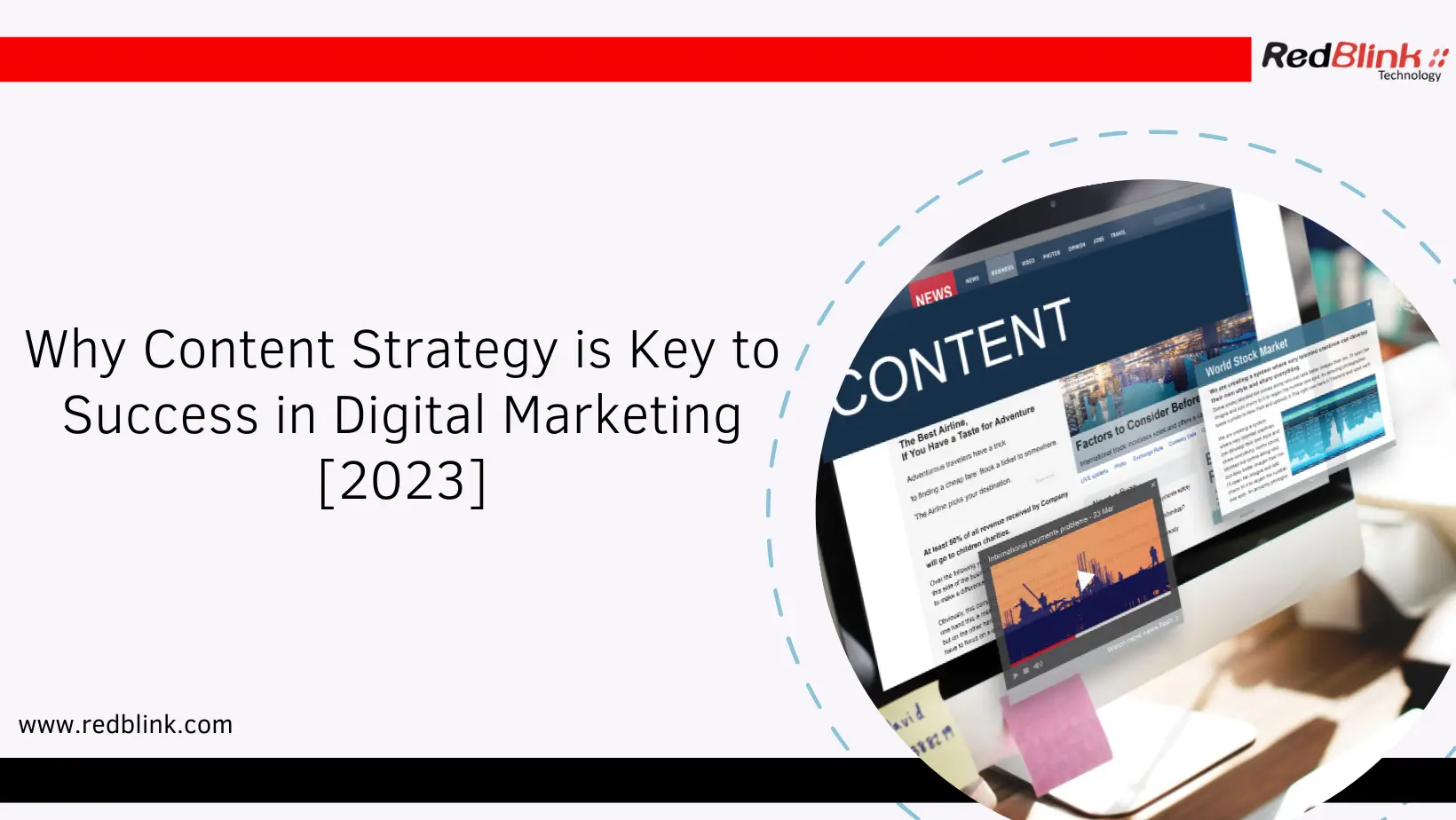
Great content is written using keyword research focusing to boost a digital marketing campaign. The main focus is to create a piece of content for lead-generation. To improve your content quality, different AI tools are used.
Overall, a user generated content must describe a business to effectively communicate with their audience, increase brand awareness, and drive conversions.
Before we know more about content development, here are some statistics about content development that will help in better understanding the importance of content development.
Is Content is still a King in 2024? Let's find out!
Google always give a lot of importance to quality content. And high-quality content requires a lot of research work. Nowadays, AI-based tools are used to create content. You can not compromise on the content quality. A digital marketing campaign is successful only when it has engaging content. Let’s take a look at some profound statistics on the matter.
- A majority of content consumption comes from organic searches (51%).
- 63% of content marketers use their content strategy to build brand loyalty
- Content marketing is outsourced by 55% of B2C marketers
- 43% of blog readers admit to skimming posts
- Only one in five bloggers report generating strong results from their efforts
- Long-form content (3000–10,000 words) gets shared more than short-form content
- The average blog bounce rate is 82.4%
These statistics show the importance of content creation in marketing and prove that it is still a king in 2024. It is evolving with AI. If your content is well written and answers the right questions then you are on your way to success.
Steps to Develop a Successful content Strategy for your Brand
-
Conducting a Content Audit
Conducting a content audit is the first step in developing a content strategy. A content audit involves reviewing all of the content on a website or social media platform and assessing its effectiveness. This allows businesses to identify gaps in their content and make informed decisions about what types of content to create in the future.
-
Brand Uniqueness
Every business has a unique selling point. The writers must recognize the uniqueness of the brand and how they can create an effective content development strategy by creating blog posts, case studies and social media content to develop the brand.
-
Setting Objectives and Goals
Setting clear objectives and goals is essential for any content strategy. They should align with the overall business goals and should be specific, measurable, and achievable.
-
Identifying Target Audience
Identifying the target audience is another important step in developing a content strategy. By understanding the needs and preferences of the target audience, businesses can create content that resonates with them and ultimately drives conversions.
-
Creating a Content Calendar
Creating a content calendar is a great way to stay organized and ensure that content is being published consistently. A content calendar should include a list of all planned content, along with the specific dates and channels it will be published on.
-
Measuring and Analyzing Results
Measuring and analyzing the results of a content strategy is essential for determining its effectiveness. By analyzing metrics such as website traffic, engagement, and conversions, businesses can make informed decisions about what content is working and what isn't, and make adjustments as needed.
-
Creating Content as per Design
Responsive design is a must for developing mobile-friendly websites and that’s the latest trend followed. While creating content, the writer must write crisp, informative and handy content. A website content must go well with the design. The headings and design must complement each other.
Types of Content in Digital Marketing to maximize traffic
Depending on the marketing niche, a variety of content is written. Each type has the different style of writing. Overall a digital marketing content is optimized content written to catch user’s attention and search engine ranking.
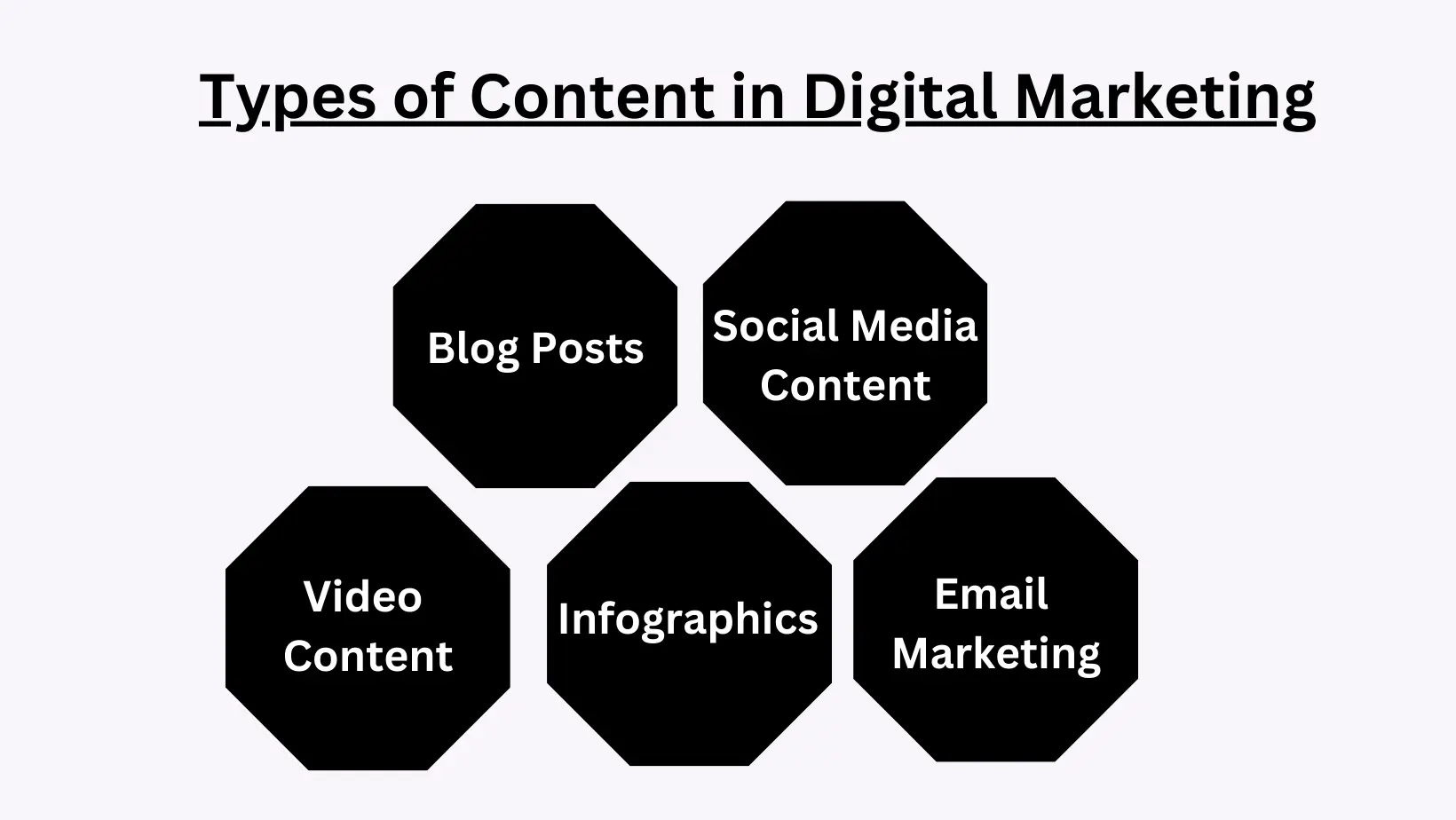
Some of the content types include:
-
Blog Posts
Blogs are written pieces of content that are published on a website. They can cover a wide range of topics and can be used to inform, educate, or entertain readers. Individuals of businesses can manage the blog section of a website, Blogs can serve the purpose of establishing thought leadership, building brand awareness, or driving traffic to the website.
-
Social Media Marketing Content
Social media content is short content written for social media platforms like Linkedin, Twitter, Facebook etc. The content is in the form of small catchy text, images, videos, or links. The main purpose of social media writing is to engage followers, promote products or services, or share information about offers and deals on different products and services. Social media posts are considered as informal content, meant to encourage user engagement and conversation.
-
Video Content
Videos captivate audiences by entertaining, educating, or informing them, enhancing the visually appealing interface of a platform. They can be used to promote products or services, provide tutorials, or share news and updates. Videos can be shared on social media platforms, websites, or email marketing campaigns.
-
Infographics
Infographics are visual representations of data or information. They can be used to make complex information easy to understand and can be shared on social media platforms, websites, or email marketing campaigns.
-
Email Marketing
Email marketing is the practice of sending promotional messages or content to a group of individuals via email. Email marketing campaigns can include text, images, videos, or infographics and can be used to promote products or services, share news and updates, or encourage engagement with a brand.
Expert Tips for Crafting Effective Content: Best Practices for Content Creation
Content creation is an essential aspect of digital marketing, and it is essential to follow best practices to ensure that your content is effective. Best practices for content creation include creating quality content, optimizing for SEO, repurposing and republishing, engaging with the audience, and measuring and analyzing results.
-
Creating Quality Content
Quality content is essential for engaging and retaining an audience. Quality content is informative, well-written, and provides value to the reader. It should be based on research and provide a unique perspective on a topic. Quality content is also well-formatted and easy to read, with images and other multimedia elements to break up the text.
-
Optimizing for SEO
Optimizing content for SEO helps to increase visibility and drive traffic to a website. Best practices for SEO include using relevant keywords, optimizing meta tags, and including internal and external links.
-
Repurposing and Republishing
Repurposing and republishing content is an effective way to reach a wider audience and increase engagement. By repurposing content, you can adapt it to different formats, such as infographics, videos, or podcasts, and share it on different platforms. Republishing old content is required for rebranding your business. It is quite helpful especially for small businesses to increase visibility and drive traffic to your website.
-
Engaging with Audience
Engaging with the audience is essential for building a loyal following and increasing engagement. Best practices for audience engagement include responding to comments and feedback, asking for input and opinions, and providing opportunities for audience members to share their content. An engaging content can complement the UI UX of the website. The user-friendly content will help in evaluating the website UI UX updates.
-
Measuring and Analyzing Results
Measuring and analyzing results is essential for understanding the effectiveness of your content and making plans. Best practices for measuring and analyzing results include using analytics tools to track website traffic, engagement metrics, and conversion rates, and conducting surveys and focus groups to gather feedback from the audience.
Overall, following these best practices for content creation will help to ensure that your content is effective and reaches the right audience.
Final Thoughts - Importance of Content Strategy in Digital Marketing
Content marketing builds customer awareness, generates leads, and increases conversions. The advancement of the digital age requires businesses to create content if they want to succeed. There will always be strategies that generate quick, short-term returns, but content marketing has the potential to increase your business's effectiveness for years to come.
A well-executed content marketing campaign can save your digital marketing efforts. While hiring a digital marketing team, you need to consider experts who can plan an effective marketing strategy to provide success in multi-channel marketing.
In the end, content development is a matter of finding the right content that best suits your marketing needs. So if you still find yourself asking “what is the importance of content marketing?”, then it is time you get in contact with RedBlink’s team.
You can book an appointment and get help to run a successful pillar-based digital marketing campaign. Our content development services include consumer insights, competitor rankings, high-value keywords, and titles for all content pieces.
Micro SaaS Implementation for the Business - Micro SaaS Guide
Micro SaaS Implementation
Tyler Tringas is credited with coining the term Micro-SaaS, and his company Storemapper was the first and simplest example of this business model. The Storemapper app enables merchants to easily add a store locator to their website without any coding required, making it accessible to anyone.
According to Storemapper, Micro-SaaS is defined as:
“A SaaS business targeting a niche market, run by one person or a very small team, with small costs, a narrow focus, a small but dedicated user base, and no outside funding. Hence, micro-SaaS.”
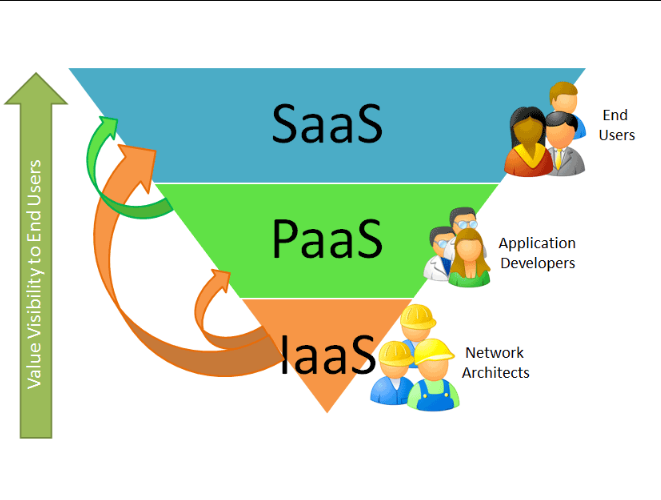
Micro SaaS is a cloud-based, affordable solution for small businesses that allows you to leverage your customers and grow into a profitable business. It is becoming increasingly popular among small business owners looking to streamline their operations and increase efficiency.
Are you looking for a successful business idea for setting up a small business? Do you want to use a cloud-based software solution to automate your business processes and provide exceptional service to your customers? If so, Micro SaaS is the perfect solution for you.
In this post, I will explain you how to implement Micro SaaS in your business. So, if you're ready to take your small business to the next level with Micro SaaS, keep reading!
Micro SAAS for Small Businesses: Challenges and Considerations
Micro SaaS (Software as a Service) is an affordable and easier SaaS software designed specifically for small businesses. As their slogan suggests, "If you're selling to everyone, you're selling to no one." This software provides tailored solutions to automate business processes in various areas such as customer management, workflow management, employee management, product development process management, social media content, and data management. For workflow management you can use this tool FindMyShift.
However, there are certain challenges and considerations that small businesses should keep in mind when using Micro SaaS. Some of the challenges are listed here
- Limited resources are available as continuous updates are taking place
- Integration with existing systems requires expertise
- Scalability with other software
- Technical expertise is limited
Despite the challenges, Micro SaaS solutions can be a great option for small businesses. Small businesses should carefully evaluate their needs and budget before they shift to Micro SaaS.
How to start working with Micro SaaS?
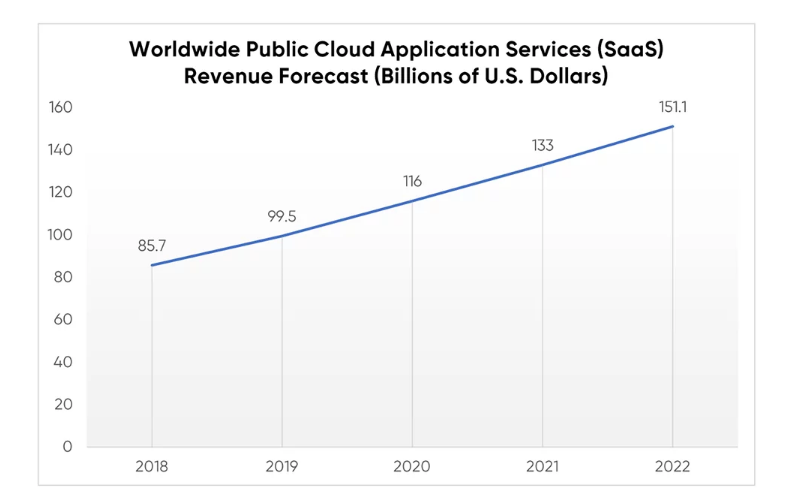
Starting a Micro SaaS business can be a long process and requires a lot of hard work and dedication, but with the right market, competition research, business model, and revenue stream, you can be successful. The key steps to implement the new business model are:
Identify a niche market
To start working with Micro SaaS, it's important to identify a niche market. Micro SaaS companies typically focus on solving a specific problem for a specific group of customers. Identifying a niche market allows you to create a product that addresses the unique needs of that market, which can help to differentiate your product from the competition.
Research the competition
Once you've identified a niche market, it's important to research the competition. Understand the existing solutions in the market, their features, pricing, target customers, and how they are marketed. This will help you to identify areas where you can improve your product and create a unique value proposition.
Business Model and Revenue Streams
Once you've identified a niche market and researched the competition, you'll need to develop a business model and revenue streams for your Micro SaaS company. There are several different business models that you can use, such as a subscription-based model, a freemium model, or a usage-based model. Additionally, you will have to think about the different revenue streams for your business such as recurring revenue, add-on products, professional services, and more.
Building the Platform
It's important to have a clear understanding of your business model and revenue streams from the start, as this will help you to create a sustainable and profitable business. Building the platform involves choosing a development method and designing the user interface. These two aspects are closely related and need to be considered together to create a product that is easy to use and meets the needs of your target customers.
Choosing a Development Method
When building the platform, it's important to choose a development method that is suitable for your business. This could be using a pre-existing framework or building a custom platform from scratch. Choosing a development method is one of the most important decisions in the development process, as it can have a significant impact on the cost and timeline of the project.
Designing the User Interface
Designing the user interface needs to be intuitive, easy to use, and visually appealing. It should be aligned with the target customer's needs and preferences. The design should be simple, consistent, and easy to navigate. The interface should be easy to understand, and it should help the users achieve their goals efficiently.
Also read - 2024 Micro-SaaS Trends & Ideas To Use for Business Productivity
Marketing and Promotion
Developing a Marketing Plan
Once you decide on the Micro SaaS solution , the next step is to choose the features. The overall design structure and product details are created . Now you will decide on:
- Wireframes
- UI Sketches
- Feature Lists
- App Maps
By finalizing a prototype, you will begin to crystallize your customized Micro SaaS solution.
Once you have a prototype of your micro-SaaS product, it's time to launch it as an MVP. An MVP is a version of your product that is good enough to start selling, but which may not be fully polished or feature-complete.
The next step after this is going ahead with marketing. Now you have to consider the minimum budget to start marketing your products .
Once you've launched your MVP, get feedback from the end users .The end user feedback is the input for improving the product. Some of the ways adopted to take user feedback are:
- Direct Emails
- Widgets like Feedback Lane
- User Surveys
- Customer Interviews
- Product Reviews
Utilizing Social Media and Online Advertising
Now that you have a polished micro-SaaS product, it's time to start full fledged marketing campaigns. You can reach your target audiences by connecting them on different platforms such as:
- Social media
- Content marketing
- Paid advertising
- PR/media outreach
- Community building
- Word of mouth
It's important to experiment with different marketing channels and find the ones that work best for your product. There is no one-size-fits-all solution when it comes to marketing, so don't be afraid to try new things!
Scale your micro-SaaS business
Once you've found a formula that works for marketing and selling your micro-SaaS product, it's time to start scaling your business. This will involve hiring new team members, investing in growth hacking initiatives, and expanding your marketing efforts to reach new audiences. Conclusion-Future of Micro SAAS in Small Businesses
Also read - Micro SaaS: Growth Hack for Small Businesses [2024]
Development and Launch
Choosing the right technology stack
Choosing the right technology stack is crucial for the success of any development project. It is important to consider factors such as scalability, security, and ease of maintenance when selecting the appropriate tools and frameworks. This will ensure that the final product is robust and can handle the demands of the target user base.
Hiring a development team or outsourcing
Hiring a development team or outsourcing the development process is another important consideration. A dedicated team of developers will have the expertise and experience to create a high-quality product, while outsourcing can be cost-effective and provide access to a wider range of skills and resources.
Testing and beta launch
Testing and beta launch are important steps in the micro SaaS app development process as they allow for the identification and resolution of any bugs or issues before the final launch. This ensures that the product is ready for the market and can provide a positive user experience. Beta testing also provides valuable feedback from real users, which can be used to make further improvements to the product.
Growth and Marketing of Micro SaaS
Growth and marketing are critical components of a successful Micro SaaS business. There are a variety of strategies that can be used to increase visibility and drive user acquisition, including SEO and content marketing, email and social media marketing, and influencer marketing.
SEO and content marketing
SEO and content marketing are essential for driving organic traffic to a website. By optimizing website content and meta tags for search engines, businesses can improve their visibility in search results and attract more potential customers. For Analytics solution use Kissmetrics, Segment tool.
Additionally, creating valuable and engaging content such as blog posts and white papers can help establish a business as a thought leader in its industry, build trust with potential customers, and encourage them to try the product. For this purpose use Prismic Content Management System.
Email and social media marketing
Email and social media marketing are powerful tools for reaching and engaging with customers. Email campaigns can be used to nurture leads and drive conversions, while social media platforms provide a way to connect with customers on a personal level and build a loyal following. Tools you can use like TimeToReply, SMTP2GO
Influencer marketing
Influencer marketing involves partnering with individuals who have a large following on social media platforms to promote a product or service. Influencers can help to increase brand awareness, reach new audiences, and build credibility for a business.
The Future of Micro SaaS in Small Businesses
Micro SaaS solutions provide small businesses with the opportunity to leverage technology and automation to compete with larger companies. The use of Micro SaaS solutions is expected to continue to grow as more small businesses adopt technology and digital tools to remain competitive.
The trend of remote work and eCommerce is driving the demand for Micro SaaS solutions that can help small businesses to manage these aspects of their operations more efficiently. (Source: "The Future of Micro SaaS", Small Business Trends, 2021)
To summarize, Micro SaaS is expected to play an increasingly important role in small businesses growth. To be an early adopter , plan implementing Micro SaaS solutions to improve your business operations.
To create a valuable solution, consult a Custom Software Development Company in California to build the best cloud based business model for your business!
2024 Micro-SaaS Trends & Ideas To Use for Business Productivity
Latest Micro-SaaS Trends & Ideas 2024
Adapt or perish, now as ever, is nature's inexorable imperative." - H.G. Wells
In the fast-paced world of technology, staying ahead of the game is essential for businesses looking to thrive. With the rise of Micro-SaaS (Software as a Service), companies now have access to a multitude of tools and platforms that can help them improve their operations and boost their growth.

As we head into 2024, it's crucial to stay informed on the latest trends and developments in the micro-SaaS industry. In 2024, Micro-SaaS apps will become more popular. The applications are built with no-code platforms like Bubble . The post covers the latest Micro-SaaS trends in 2024.
Navigating Micro-SaaS Landscape for Small Businesses
Navigating the Micro-SaaS landscape is a daunting task for small businesses. The term “micro” in Micro-SaaS does not refer to the size of the company or product, but to the scope of the business challenge.
Using software as a service (SaaS) is a well-accepted process for businesses at large scale. But it becomes difficult for small businesses to use such costly software solutions
The main purpose of Micro-SaaS was to search for small business challenges and to find out the solutions for using Micro SaaS products.
Some of the solutions provided by Micro SaaS include:
- AI-Generated Copy, Notion-to-Site and Sheet-to-Site tools help in recreating the business with improved efficiency.
- Micro-XaaS services - Faster than SaaS solutions- Examples are : NurtureKit and Gloat
- Time-saving - Examples are feedback tools, and sheet-to-API tools.
- Get to know - Page Flows, GoRails, Storytale and Start React Native - To generate optimized content
8 Latest Trends & Ideas Of Micro SaaS To Improve Business Productivity
Micro SaaS is a cloud-based, subscription-based model offering a cost-effective solution to leverage the power of technology. Unlike traditional software, it doesn't require expensive maintenance costs, making Micro-SaaS the perfect choice for small businesses on a budget.
And the best part? Getting started with Micro SaaS is a breeze! With low barriers to entry, you can quickly and easily implement Micro SaaS into your business with minimal setup and training. Stay ahead of the game and stay on top of the latest Micro SaaS trends - your business will thank you! Here are the latest Micro SaaS trends to follow in 2024:
1. Artificial Intelligence and Machine Learning Integration

In 2024, more Artificial Intelligence (AI) and Machine Learning (ML) services will be used with Micro SaaS applications. By incorporating AI and ML, Micro SaaS can provide better customer support. Catering to the business needs, the software will provide more accurate and personalized recommendations, and automate repetitive tasks.
The AI and ML enabled cloud computation software will allow better data management so that small businesses can have better interfaces. Relationship management will be improved with better data management for small businesses.
The integration of generative AI and ML in Micro SaaS is becoming increasingly popular and is expected to play a significant role in the future of software development.
2. Focus on User Experience and Customer Engagement
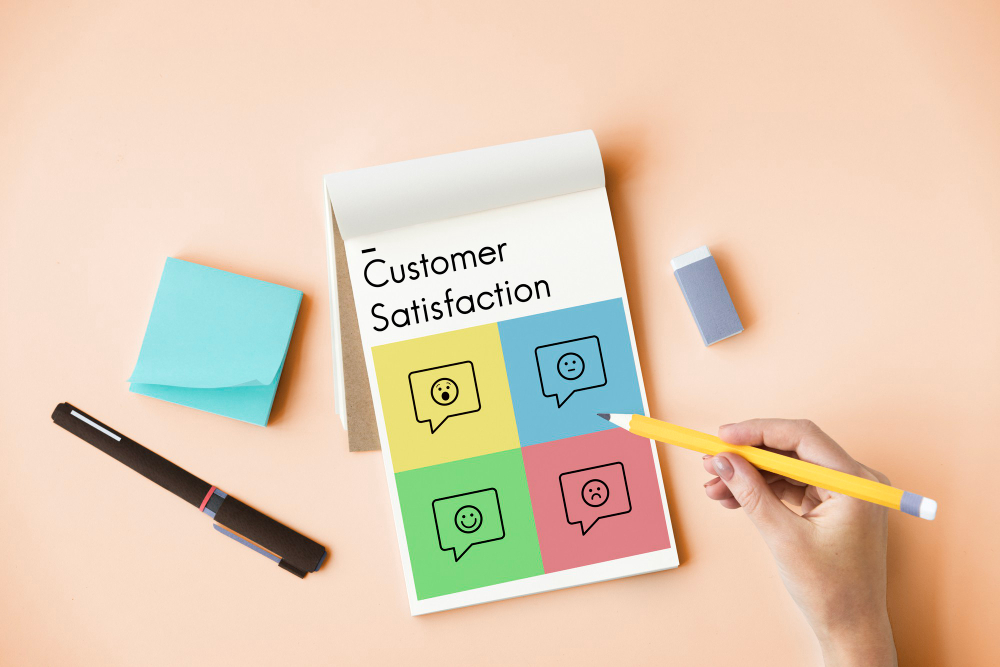
In recent years, there has been an increasing focus on improving the user experience and customer engagement in Micro SaaS. Implementing user-friendly interfaces, providing personalized recommendations, and using data analysis to gain insights into customer behavior.
Additionally, companies are also investing in tools and technologies to engage with customers in real-time and respond quickly to their needs.
3. Use of Chatbots and Other Conversational Interfaces
Chatbot applications help in improving customer engagement and support. Chatbots can simulate human conversation and be integrated into Micro-SaaS platforms to provide 24/7 support, automate repetitive tasks, and offer personalized recommendations.
Virtual assistants, similar to chatbots, can also provide a more personalized experience by offering recommendations based on browsing and purchase history.
4. Greater Adoption of Subscription-Based Pricing Models

Using the subscription model, the business owner can pay recurring fees, usually on a monthly or annual basis using Micro SaaS service. This is in contrast to traditional pricing models, such as one-time purchases or pay-per-use models. The payment model is beneficial for small businesses and customers.
For businesses, it provides a more predictable revenue stream and allows them to better forecast future growth. For customers, it provides a lower barrier to entry, as they can start using the software without a large upfront cost
5. Emphasis on Data Privacy and Security

Small companies are investing in advanced technologies and strict protocols to protect their customers' data from cyber threats and breaches. Micro SaaS companies are implementing features such as two-factor authentication and end-to-end encryption to provide an added layer of security to their customers.
To build customer trust and credibility, Micro SaaS companies need to prioritize data security.
6. Greater Use of Cloud-Based Infrastructure

Micro SaaS solutions are cloud based solutions offering anytime/anywhere access. 24by7 access can help small businesses to work with greater flexibility and remote work capabilities.
Additionally, cloud-based infrastructure provides more scalability as it allows businesses to easily scale up or down their resources as needed. Cloud-based infrastructure also provides better disaster recovery options and it can help to reduce operational costs.
7. Greater Emphasis on Remote Work and Collaboration

With the shift towards remote work, Micro SaaS companies are placing greater emphasis on developing tools and features for remote collaboration and communication. Advanced tools such as the integration of video conferencing, messaging, and project management tools enable teams to work together seamlessly even when they are physically apart.
Additionally, time-tracking and task management tools are also introduced by Micro SaaS to manage remote teams.
8. More Use of APIs and Integration with Other Software

APIs allow different software systems to communicate and share data, which enables Micro SaaS companies to integrate their software with other platforms and services.
APIs enable Micro SaaS companies to expand the functionality of their software by integrating with other software, such as CRM, ERP, and data analytics tools. As a result, the use of APIs and integration with other software is becoming an important trend in the Micro SaaS industry.
Key Takeaways- Boost your Small Business using Micro SaaS Products!
To summarize, the use of Micro SaaS tools is on the rise and small businesses are rapidly adopting them to improve productivity and streamline processes and enhance customer experience.
With the right Micro SaaS tool, companies can improve their business operations and reach new levels of success. From chatbots for customer support to HR automation and sales lead generation, the potential for Micro SaaS is limitless.
The time is now to embrace the Micro SaaS revolution and start experimenting with these innovative tools. To improve your business productivity, implementing the right Micro SaaS solution can help you stay ahead of the competition and drive growth for your business.
Don't miss out on the opportunity to take your business to the next level – get started with Micro SaaS today! Ready to dive more into generative AI? Learn how to build your own generative AI solutions.
Micro SaaS: Growth Hack for Small Businesses [2024]
Micro SaaS: Growth Hack for Small Businesses
Micro-SaaS is a software as a service (SaaS) business model offering a specific, niche software solution to a small target market. Small businesses have small setup and require a featured software solution instead of large SaaS products.
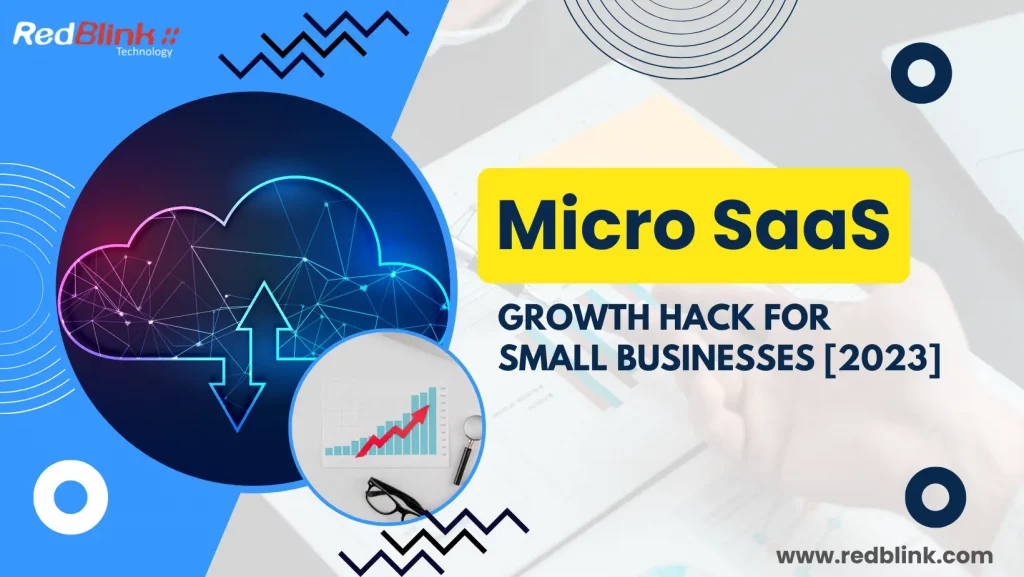
Micro-SaaS is developed to operate in niche industries addressing the needs of a specific target audience serving startups and small size companies.The software solution focuses on business processes providing a nimble solution with agile approach.
Here, in this post we are addressing the need of Micro SaaS for small businesses and how it can be beneficial to streamline small setup.
What is Micro SaaS?
Micro SaaS, also known as Micro Software as a Service, is a type of software that addresses the specific needs of a small and niche market. These applications can be securely accessed via any smart device or browser, making them widely accessible to users.
Micro SaaS solutions are known for their minimal resources, low investment, and low budget, and they can be operated by a small team.
Importance of Micro SaaS in small businesses
Micro-sized SaaS is increasingly becoming an on premise tool for small businesses.The software falls in the category of management software to streamline and simplify business management tasks. The software offers various advantages to small scale businesses including:
-
Cost-effectiveness
Micro SaaS is typically more affordable than traditional SaaS, making it accessible to small businesses that have limited budgets. The subscription-based model also allows small businesses to pay only for what they need, rather than purchasing a comprehensive software suite that they may not use.
-
Scalability
Micro SaaS is designed to be scalable, allowing small businesses to easily add or remove users, features, or functionalities as their needs change. This allows small businesses to adapt to changes in their operations or market conditions without incurring significant costs.
-
Customization
Micro SaaS allows small businesses to customize the software to their specific needs, unlike traditional SaaS which may have limited customization options. This allows small businesses to make the software work for them, rather than having to adapt their processes to the software.
-
Quick deployment
Micro SaaS can be deployed quickly and easily, allowing small businesses to start using it almost immediately. This allows small businesses to start seeing the benefits of the software right away, rather than having to wait for a long implementation process.
-
Accessibility
Micro SaaS is usually delivered via the internet, allowing small businesses to access it from anywhere, at any time. This allows small businesses to work remotely, reducing the costs of office space, and increasing the flexibility and productivity of their employees.
How Does Micro Saas Solve Small Business Problems?
Micro SaaS is a cost-effective and flexible solution for small businesses, providing them with the tools they need to improve their operations, productivity, and customer service, without incurring high costs. By choosing the right Micro SaaS solution, small businesses can overcome challenges and improve their bottom line.
Lets see how it can help your small business:
-
Understanding Customer Needs
Micro SaaS providers typically focus on specific industries and business needs, which allows them to understand the needs of their customers. This understanding enables them to provide software solutions that cater to specific needs of small businesses in that industry. By understanding the specific needs of small businesses, Micro SaaS providers can ensure that the software they offer is tailored to the specific requirements of their customers.
For example, a Micro SaaS provider that specializes in providing solutions for small retail businesses will have a deep understanding of the specific challenges that retail businesses face and can provide solutions that cater to those challenges. This could include features such as inventory management, sales reporting, and customer relationship management, which are specific to retail businesses.
-
Cost-Effective solution for small businesses
Micro SaaS is often more affordable than larger, more comprehensive SaaS products. This makes it accessible to small businesses with limited budgets and resources.
According to a study by Software Advice, a Gartner company, 82% of small businesses prefer cloud-based software due to its affordability and accessibility compared to traditional software solutions. Micro SaaS, being a subset of cloud-based software, can offer similar benefits to small businesses in terms of cost-effectiveness.
-
No Manpower is required to Maintain Micro SaaS
Micro SaaS products are designed to be user-friendly and easy to use, without requiring extensive technical skills. This allows small business owners and employees to quickly adopt the software and start seeing benefits.
A survey by Clutch found that ease of use is the top consideration for small businesses when choosing a software solution. 59% of small businesses said that ease of use is the most important factor in their software purchasing decisions.
This highlights the importance of user-friendly software for small businesses and supports the argument that micro SaaS products can be especially appealing because they are designed to be simple to use
-
More Scalable for Small Businesses
Many micro SaaS products are designed to be scalable, so as a small business grows, it can continue to use the software to meet its changing needs. This helps small businesses avoid the costs and complexity of having to switch to a new solution as they grow.
One example of a small business that has benefitted from using micro SaaS products is a local bakery. The bakery initially used a micro SaaS product for managing their customer orders and invoicing. As the bakery grew and started to have more employees, they added another micro SaaS product for scheduling and managing their staff.
By using these two separate but complementary micro SaaS products, the bakery was able to scale its operations without having to switch to a new, more complex solution. This saved the bakery time and money and allowed them to focus on growing their business instead of managing their software.
-
Complete Solution for Small Business Growth
Micro SaaS solutions allow small businesses to focus on growing their business rather than managing complex software systems, giving them a competitive advantage over businesses that do not use technology.
Simply put, Micro SaaS can meet the specific needs of small businesses. The small setups can improve their operations, productivity, financial management , employee management , organizational data and information flow system and customer service. This understanding allows small businesses to opt for Micro SaaS- A single solution for multitasking!
Advantages of Micro SaaS
Micro SaaS apps solve specific problems for specific groups of people. A small team can run the SaaS based apps independently. You can design a Micro-SaaS app with minimum features. The SaaS platform extends to platforms such as Shopify, Stripe or Intercom. Micro SaaS offers several advantages for small businesses, including:
-
Low cost and Robustness
Micro SaaS solutions are typically more cost effective than traditional SaaS solutions. The subscription-based model allows small businesses to pay only for what they need, rather than purchasing a comprehensive software suite that they may not use.
Additionally, Micro SaaS is designed to be scalable, allowing small businesses to easily add or remove users, features, or functionalities as their needs change.
-
Flexibility and customization
Micro SaaS solutions offer small businesses the flexibility to customize the software to their specific needs, unlike traditional SaaS which may have limited customization options. This allows small businesses to make the software work for them, rather than having to adapt their processes to the software.
-
Speed of deployment
Micro SaaS solutions can be deployed quickly and easily, allowing small businesses to start using it almost immediately. This allows small businesses to start seeing the benefits of the software right away, rather than having to wait for a long implementation process.
-
Specialized solutions:
Micro SaaS providers typically focus on providing specialized solutions for specific industries, such as healthcare, retail, and logistics. This allows Micro SaaS providers to cater to the specific needs of these industries, and offer a specialized solution for them.
This specialized solution caters to the specific needs of small businesses in that industry and can help them improve their operations, productivity, and customer service.
Choosing the right Micro SaaS for your business
Choosing the right Micro SaaS solution for your business is essential for getting the most out of your investment. Here are some steps you can take to ensure that you choose the right Micro SaaS solution for your business:
- Identify your business needs
- Evaluate features and pricing
- Consider the vendor's reputation and support
- Test the software
- Consider the integration with existing systems
Conclusion- Micro SaaS as a Growth Hacking tool for small businesses!
Micro SaaS is a cost-effective and scalable solution offering an array of benefits to small-scale businesses. The term micro means specific software solution with minimum cost.
The tool optimizes business operations, increases productivity, and enhances customer service. Micro SaaS solutions are like CRM software with more affordable solutions than traditional SaaS. They are highly scalable, enabling small businesses to adapt to changes in their operations or market conditions with ease.
The subscription-based model allows small businesses to pick up the specific solution to boost business productivity or to automate the business process.By carefully selecting the right Micro SaaS solution, small businesses can overcome challenges and improve business productivity.
All you need to do to avail the best Micro SaaS service is to consult a professional team. At RedBlink we have customized Micro-SaaS services designed to cater the needs of small businesses. You may consult our development team to get the SaaS tool as per your business needs!
How to Build a Brand From Scratch - Branding Strategies Guide
How to Build a Brand
Establishing a strong brand identity for a startup business can prove to be a game-changing business strategy. Brand-awareness in the present global competitive market niche requires a brand strategy.
The importance of branding cannot be understated for small businesses, as it plays a vital role in building a brand image. Developing a distinct brand identity and narrative is of paramount significance, yet the right brand positioning is a challenge for startups.
A robust brand can differentiate a business from its rivals, foster customer loyalty, and drive sales. The post will cover the significance of branding for small businesses. The pivotal role of brand identity and consistency, as well as the advantages of both branding and rebranding, are also discussed in the blog.
Importance of Branding for Small Businesses
The most important component of your brand is a consistent brand promise. The first impression of a company's brand -image is the logo and tagline used to define a business.
The tagline should focus on the benefit of your product or service to your customers and include key identifying features of your company. Branding is based on the perception and the process of winning the heart of potential customers. The main element to consider while creating a brand are :
- Brand Promise
- Brand Positioning
- Brand Reputation
- Brand Recognition
- Customer experiences and expectations
Good branding is all about winning trust, recognition,loyalty and good reputation. According to Accenture, 66% of consumers say that a brand's culture and transparency are key factors in attracting them to purchase from a particular brand, and 62% want companies to take a stand on issues that align with their values. This highlights the impact of effective branding. A full branding campaign represents:
- Products or services
- Reaches Target Customer Base
- Maintains employee relations
- Builds new product promises
- Helps in managing brand name and values
- Achieves societal goals
- Establishes brand consistency
Nike is a good example of establishing a solid brand architecture.. The brand's recognition extends far beyond the iconic red swoosh of its logo. Nike uses a short, powerful slogan "Just do it"which helps in instant recognition to the majority of consumers.
Building a Memorable Brand: Guide to Success
A successful brand identity is the foundation of any successful small business. It encompasses the core elements to introduce a brand to target consumers in a more innovative way. These elements include a mission statement, logo, color scheme, and more. A strong brand identity helps to differentiate a brand from its competitors and establish a unique position in the market.
Elements Of A Strong Brand Identity
Elements of strong brand identity include a clear and concise mission statement , brand and marketing strategy ,typefaces , and visual representation of the brand. A consistency in color scheme, typography, and other design elements represents your brand at a big scale.
Differentiate your Brand from Competitors
A brand needs to differentiate itself from its competitors. A brand should aim to create a unique value proposition that sets it apart and appeals to its target audience. This can be achieved by developing a unique messaging, or a strong brand personality. By differentiating a brand, you can make a brand more powerful.
Storytelling: The Future of Business Branding
Storytelling helps to create a narrative around a brand and its products or services . Creating a story builds an emotional bond with customers. A story can also help to build brand loyalty and create a sense of trust and credibility with customers.
Example of successful brand storytelling is Coca-Cola's "Share a Coke" campaign, which encourages customers to share their personal stories and memories associated with the brand.

Another example is Apple's "Think Different" campaign, which celebrated the creative and innovative spirit of the brand and its customers.
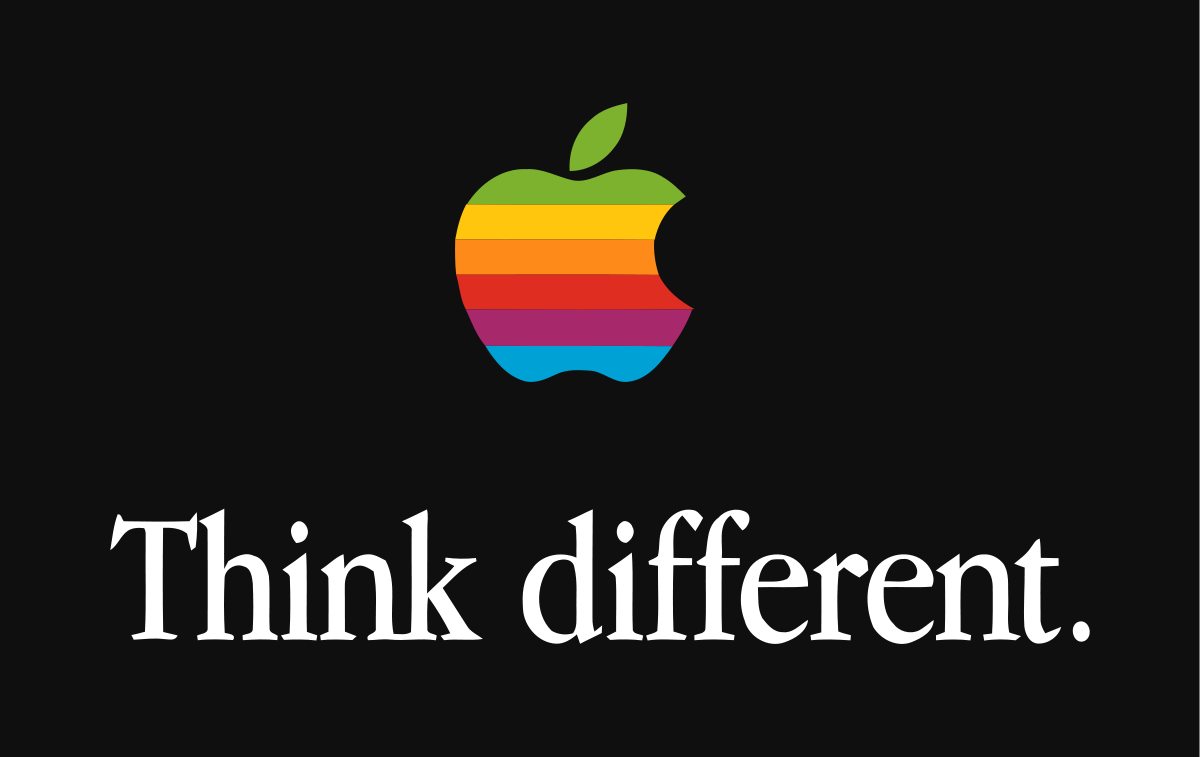
Consistent Branding Across All Marketing Channels Is Crucial
When a customer sees a company's logo, colors, and messaging consistently across different platforms, they are more likely to recognize and trust the brand. This is because consistent branding helps to create a sense of familiarity and reliability, which can lead to increased customer loyalty and ultimately drive more sales.
To ensure all marketing efforts are aligned and cohesive, brand consistency is required in Multi-Channel Marketing
- Consistent branding across all marketing channels is essential for building a strong and recognizable brand.
- Consistency can increase customer recognition and trust by creating a sense of familiarity and reliability.
- Developing a comprehensive set of brand guidelines can help to ensure consistency in branding across all marketing channels.
- A clear process for reviewing and approving marketing materials is important to ensure they align with the brand guidelines.
- Consistency in branding can help to create a stronger brand identity and ultimately drive more sales.
After this post check out - What is Brand Storytelling & How to Tell a Brand Story
Reposition Your Brand By Rebranding
Rebranding is the process of creating a new image and identity for a company, product, or service. It is an important strategy for companies to stay relevant and competitive in the ever-changing market. Below are some of the reasons why rebranding is important:
- Repositioning: Rebranding can help a company to reposition itself in the market, to better align with its target audience, and reflect its current values and mission.
- Adapting to the changing market: Rebranding can help a company to adapt to changes in the market and stay relevant to customers.
- Differentiation: Rebranding can help a company to differentiate itself from its competitors and stand out in the market.
- Reflecting growth and evolution: Rebranding can help a company to reflect its growth and evolution, as well as its new products or services.
- Revitalizing a declining brand: Rebranding can help to revitalize a declining brand and bring in new customers.
Rebranding can be a significant investment, but it can pay off in the long run by improving a company's image and helping it to stay competitive in the market.
After this post check out - How to Rebrand your Business - Best Practices
Unleashing the Potential: Answering FAQs on Crafting a Strong Brand Identity
Q: Why is brand identity important?
A: Brand identity is important because it sets a company apart from its competitors and helps build a relationship with customers. A strong brand identity can also increase customer loyalty and improve a company's bottom line.
Q: How does your company create a brand identity?
A: Our team of branding experts works closely with each client to understand their vision, values, and goals. We then use that information to create a customized brand strategy that includes a unique brand identity.
Q: Can you help reposition our brand?
A: Yes, our team has experience in repositioning brands and creating a fresh new image that better reflects the company's values and goals.
Q: Do you offer a satisfaction guarantee?
A: Yes, we offer a 100% satisfaction guarantee on all of our branding and marketing services.
Forward Path
In conclusion, crafting a strong brand identity is essential for businesses looking to succeed in today's competitive market. With our team of experts and commitment to customer satisfaction, we are the go-to choice for businesses looking to establish a strong brand identity. Contact us today to get started on elevating your business and your brand.
Creating a powerful brand is a necessity for small businesses to grow exponentially.

